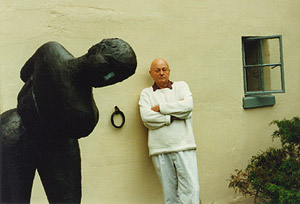

Vol. 1, Issue 1
17 October, 1999







Site Launched:
17 October, 1999
Page created
by Tandem Designs©
Graphics: Tommy
Programming: Brian Grosz


Mihail was born in Bulgaria in 1929, and studied sculpture in the academic realist mode. Major commisions include the bronze monument The Uprising of Kings Asen and Peter at the National Museum of Patrimony in Veliko Tirnovo and the Statue of Paissi, a 17th Century national hero, in the central square of Sofia. When the latter work was ordered destroyed by the Communist Government in 1966, the artist left Bulgaria and settled in Tunisia. (The Statue of Passi was saved by public protest by concerned Sofia citizens and now stands nearby the National Cathedral of Alexander Nevsky.)
While in Tunisia, Mihail executed a number of public works, including The Martyrs of Bizert, a series of marble reliefs for the National Monument which was erected in 1969 to commemorate Tunisia's struggle for independence from France. Mihail also began to develop a complex code of abstract symbols which he first employed in his series Sunday Morning (1967).
In 1970 Mihail relocated again, this time to New York City. Exhibiting in a number of international galleries, the artist became fascinated with the process of live-casting. This led to his project Cast the Sleeping Elephant, in which a live bull elephant was cast in seventy-two minutes with no harm to the animal. The resulting piece now stands in the gardens of the United Nations in New York City.
Recent works in sculpture and on paper explore the Minotaur as an emblem of the creative process. A number of these are replicated here in slide form, including The Garden of the Lost Snake (1996) and Young Man with Leopard in Mind.
Sculpture: